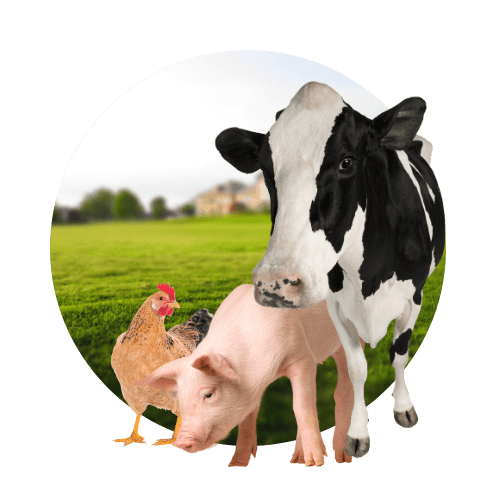Antibiotic resistance is a global concern that threatens the effectiveness of modern medicine. The overuse of antibiotics in both human and animal healthcare has led to the emergence of superbugs – bacteria that are resistant to multiple types of antibiotics. While the misuse of antibiotics in human medicine is well-known, a growing body of evidence suggests that animal agriculture also plays a significant role in the rise of antibiotic-resistant bacteria. In this blog post, we will explore the connection between animal agriculture and antibiotic resistance, shedding light on this growing concern.

Overview of Animal Agriculture and Antibiotics
Animal agriculture, which encompasses the farming of livestock for meat, dairy, and eggs, is essential for meeting the global demand for animal-based food products. Keeping animals healthy and disease-free is of paramount importance to maintain productivity and profitability in this sector. To achieve these goals, antibiotics have been widely used in animal agriculture for several decades.
The routine use of antibiotics in animal agriculture is primarily aimed at promoting growth, preventing and treating diseases, and maintaining herd or flock health. Antibiotics are used to prevent infections that often arise from the crowded and stressful conditions in which animals are raised in intensive farming systems.
However, the misuse and overuse of antibiotics in animal agriculture have grave consequences. The constant exposure of bacteria to low doses of antibiotics creates an ideal environment for resistant strains to emerge and flourish.
The Mechanisms Behind Antibiotic Resistance
To understand how antibiotic resistance develops, it is important to explore the underlying mechanisms. Bacteria possess remarkable abilities to adapt and survive in the face of antibiotic exposure.
Mutation is one such mechanism through which bacteria acquire resistance. Random genetic mutations can occur within bacterial DNA, providing them with the ability to withstand the effects of antibiotics. Moreover, bacteria can transfer antibiotic resistance genes to others, even across different species, through a process called gene transfer.

When animals are exposed to antibiotics, the susceptible bacteria are killed, but resistant bacteria survive and multiply, passing on their resistance genes to future generations. This genetic exchange can lead to the transfer of antibiotic resistance from animals to humans, resulting in the spread of superbugs that are increasingly difficult to treat.
This indiscriminate use of antibiotics in animal agriculture creates a conducive environment for the development and spread of antibiotic resistance. Bacteria within the animals’ gut or on their skin are exposed to sub-lethal doses of antibiotics, providing ample opportunity for resistant strains to emerge and thrive.
Another concern is the use of antibiotics critically important for human health in animal agriculture. These antibiotics, known as medically important antibiotics, are vital for treating serious human infections. When used in animals, the risk of transferring resistance to bacteria that infect humans significantly increases.
The Public Health Implications
The impact of antibiotic resistance on public health cannot be overstated. If left unchecked, it could undermine our ability to effectively treat common infections and may lead to a rise in severe diseases that were previously manageable.
This indiscriminate use of antibiotics in animal agriculture creates a conducive environment for the development and spread of antibiotic resistance. Bacteria within the animals’ gut or on their skin are exposed to sub-lethal doses of antibiotics, providing ample opportunity for resistant strains to emerge and thrive.
Another concern is the use of antibiotics critically important for human health in animal agriculture. These antibiotics, known as medically important antibiotics, are vital for treating serious human infections. When used in animals, the risk of transferring resistance to bacteria that infect humans significantly increases.
Studies have shown that antibiotic-resistant infections result in longer hospital stays, increased mortality rates, and higher healthcare costs. The treatment options available for these infections are limited, leaving healthcare professionals with few alternative drugs that may be less effective and more toxic.
Furthermore, the spread of antibiotic-resistant bacteria from animals to humans can occur through direct contact, consumption of contaminated meat or dairy products, or exposure to contaminated soil or water. This highlights the urgent need to address the issue of antibiotic resistance in animal agriculture to safeguard public health.
Alternative Approaches for Sustainable Animal Agriculture
There is growing recognition of the need to reduce antibiotic use in animal agriculture and adopt more sustainable practices. Various strategies have been proposed and implemented to promote responsible antibiotic use and support the well-being of animals.
Improving hygiene and implementing biosecurity measures on farms can significantly reduce the need for antibiotics. These measures include proper waste management, ensuring clean and comfortable housing conditions, and disease prevention through vaccination.
















































